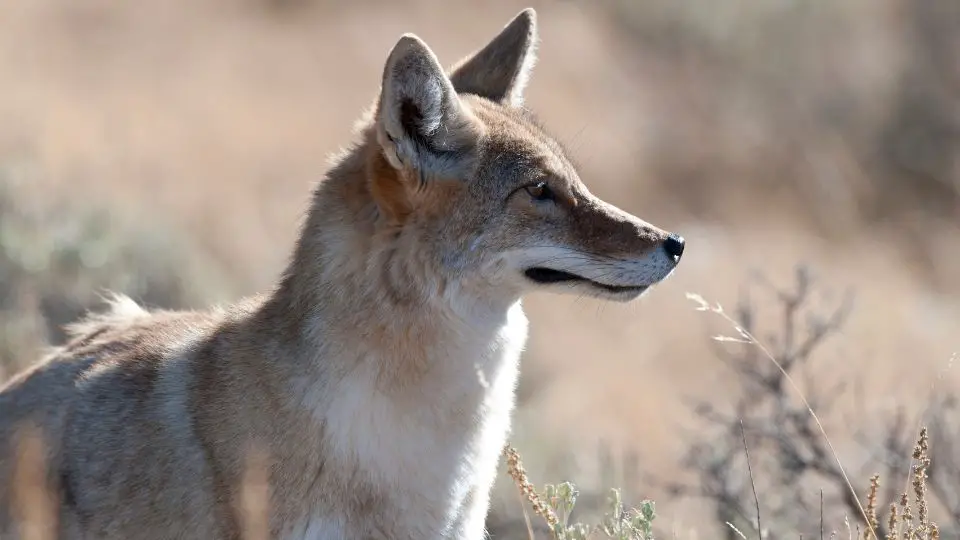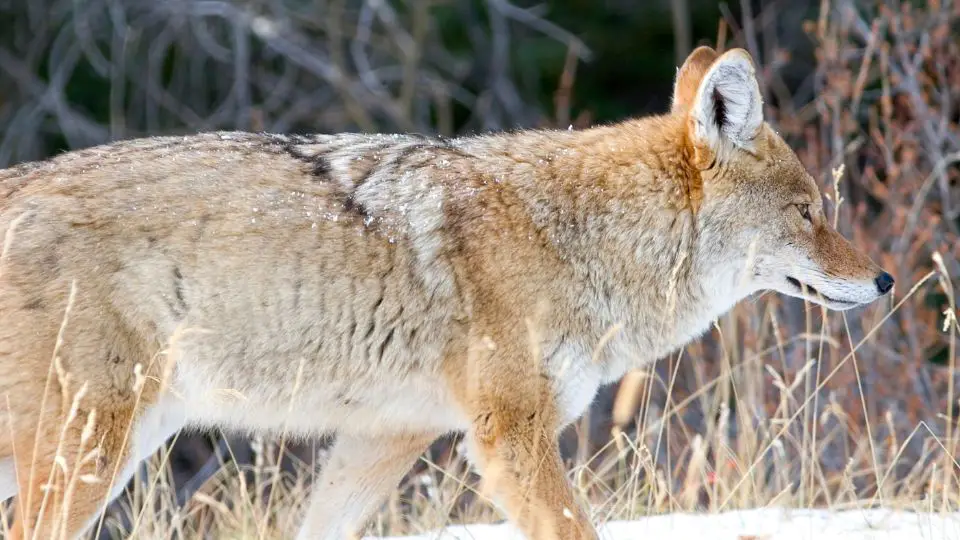Wild game meat is an excellent bait for coyotes. These wandering canines love fleshy game, so pig meat and dear meat make great coyote bait. The pungent odor of aged meat can also be highly effective in luring these predators from afar, thanks to their sharp olfactory senses.
Table of Contents
- What Is the Fastest Way to Attract Coyotes?
- How Do You Bait a Coyote at Home?
- How Do You Bait Coyotes for Hunting?
- What Scent Attracts Coyotes?
- What’s the Best Time of the Day to Hunt Coyotes?
- Is It Better to Hunt Coyotes Day or Night?
- Can You Bait Coyotes With Dog Food?
- Are Coyotes Attracted to Dog Urine?
- Do Coyotes Travel in Twos?
- What Food Attracts Coyotes?
What Is the Fastest Way to Attract Coyotes?
Using meat from a coyote’s natural diet is effective most of the time. However, if their habitat is teeming with prey, coyotes may not be able to pick up on the scent as quickly.
Therefore, if you want to capture their attention, try baiting traps with exotic varieties of meat or organs that aren’t endemic to the local ecosystem.
Fish, beaver, and gopher meat are all hearty options that a coyote will enjoy. If you can procure these foods, you’ll have a higher chance of attracting these curious predators.
How Do You Bait a Coyote at Home?
Baiting a coyote at home will require you to have a meat source that they’ll enjoy. A frozen hunk of meat from a deer or pig carcass can do the trick. It doesn’t have to be cleaned beforehand; the bloody scent that emits from these carcasses can be used to attract coyotes from faraway distances.
At home, you can set up foothold traps or neck snare traps around your property. Coyotes are unpredictable creatures and can threaten humans and pets, so these traps ensure that any live trap mishaps may be avoided.
How Do You Bait Coyotes for Hunting?
A baitsicle, or a frozen food source, is an effective lure to hunt coyotes. These piles can include mounds of liver, fat, and entrails from game such as deer and hogs that will trigger a coyote’s scavenging instincts.
Ideally, place your bait near the edge of a woodline or an open, forested space where coyotes will feel safe venturing into. Position yourself about 100 yards away from the bait, where you can secure a good vantage point.
Once you see a coyote approaching the bait, take your shot. You may also use a coyote call lure to mimic these creatures into entering the baited area.
What Scent Attracts Coyotes?
The best attractant scents for coyotes are musks that mimic their natural diet. These food lures include the smells of blood, guts, and rotting flesh from deer, cows, and other wild game in the surrounding area.
Exotic meat scents can also be effective trapping lures for coyotes. Coyote urine may also be used as an attractant for these coyotes. It may also attract bobcats, raccoons, and foxes, so use them sparingly if you somehow have access to this liquid.
Lastly, a coyote gland lure can be an effective predator bait. This trapping bait indicates a coyote’s presence, triggering a male’s territorial response.

What’s the Best Time of the Day to Hunt Coyotes?
Coyotes aren’t strictly nocturnal but prefer prowling the lands between dusk and dawn. For this reason, many hunters prefer to start their coyote hunts around sunset and continue into the night.
That said, it’s challenging to spot coyotes during the nighttime, so plan your hunt during the break of dawn. The little bit of light in the sky can provide enough illumination to spot the predator without the aid of external light sources.
In a similar vein, sunset hours may also be effective. There’s enough ambient light, and coyotes are about to start a new day of hunting on their own.
Is It Better to Hunt Coyotes Day or Night?
If you’re coyote trapping, set it up during the day and leave it open for a coyote to wander in during the night. If you’re predator hunting on your own, you might want to hunt during the golden hours.
These are the times of the day when there’s enough illumination in the sky to spot a coyote. But it’s not so bright that the animals return or are still inside their habitat. If you’re aware of the coyote’s den, then you can also plan a hunt around their denning schedule.
Coyotes usually stick to one place to rest and raise their young, so finding and waiting around their den can lead to a successful hunt. Just be careful—these coyotes can get aggressive if they suspect their cubs are in danger!
Can You Bait Coyotes With Dog Food?
Coyotes have been known to enter yards to eat dog treats left out in the open. Especially in semi-urban areas, using this as a type of bait is entirely possible.
Depending on the coyote, they may even develop a preference for dog food over certain types of meat so that they can be ideal baits for some trappers.
Are Coyotes Attracted to Dog Urine?
While male dogs pee as a mark of their territorial boundary, coyotes don’t often get the memo. Coyotes are deterred by wolf urine but not dog urine.
In fact, the urine of female dogs in heat can attract their wild canid cousins like coyotes to enter your property. As such, it’s essential to control your dog’s urination if you live in an area with a high coyote population.

Do Coyotes Travel in Twos?
Coyotes travel individually or in pairs when they hunt. They may also form a coyote family of around 2 to 3 adults and 7 to 11 cubs, but these families will eventually break up and hunt on their own once they reach maturity.
They may work collaboratively with other coyotes to take down large prey, but if they’re not part of the family den, they won’t find the need to travel in a pack with this new group.
What Food Attracts Coyotes?
Coyotes have a varied diet consisting of meat, fruits, and detritus. Their typical diet includes:
- Rodents
- Dog food
- Carrion and dead game
- Livestock
- Poultry
- Insects
- Fruits
A coyote most commonly eats rodents and marsupials, which comprise about 75% of its diet. This includes mice, voles, chipmunks, skunks, rabbits, and squirrels.
They’re not picky when it comes to their food, either. They enjoy feasting on various types of meats, even once they’ve never eaten in the past.








































